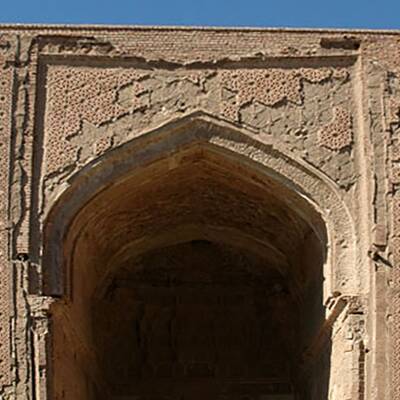The roofed Bazaar of Shahroud is a place reminiscent of the Qajar era, located in the middle of the city of Shahroud in Semnan Province. The roof and construction of the ceiling of the Bazaar of Shahroud is one of its architectural ploys that has resulted from the conditions of building a bazaar in a place with desert climatic conditions. Apart from the roof of the bazaar one can mention the making of domes with brick and cob bricks to confront and counteract the heat of the desert, and keeping the temperature levels low. Also the main structure of the bazaar is from raw cob.
The roofed Bazaar of Shahroud is composed of five gateways, and two main pathways. One of the pathways is Bazaar and other is Anarakis. This large bazaar that is enlisted in the list of national heritages of Iran has various parts such as mosque, caravanserai, school, water reservoir and bathhouse.
The Bazaar of Shahroud complex, spreading over eighteen thousand square meters, consists of an area with four bazaars and an area with three bazaars which together house two hundred and fifty individual shops.
One has to go back to the Shahroud of the Qajar era to find the roots and understand the historical background of the emergence and construction of the roofed Bazaar of Shahroud. Until hundred years ago, Shahroud was not more than a village. At the end of the Qajar era, especially in the last decade of the thirteenth century it expanded and had massive developments. This expansion was to such an extent that it overshadowed the historical city and sovereignty of Bastam. In the last years of the Qajar dynasty, it became the political and bureaucratic axis of Bastam, Damghan and Semnan. With the advancement of commerce and agriculture, Shahroud that now was one of the main commercial or trading cities of the northeast of Iran, demanded a bazaar and a new trading and sales axis.
This new status needed to develop and expand through the making of roads, caravanserais, shops and trading houses, so that in addition to responding and housing Iranian companies, it could host international companies. It was these commercial and economic needs that gave the roofed Bazaar of Shahroud its importance.



